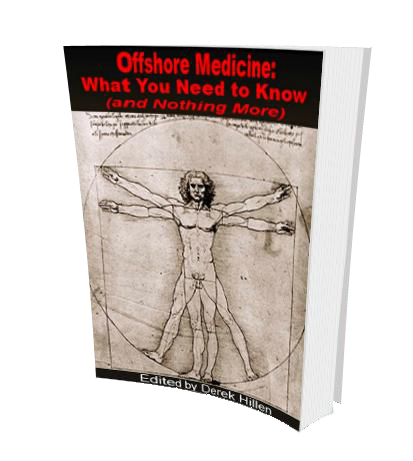- Boat
- Articles
- About
- Tehani-li Logs
- 2004
- Uligan Maldives
- Man, Oh Man, Oman
- Eritrea: The Nicest Place You’ve Never Heard Of
- Cruising Notes: Oman to Eritrea – From Pirates to Cappucinos
- Old Testament Sudan
- Egypt: Legend, Myth and Reality
- Thoughts on Cruising the Red Sea
- Greece: Civilization Again
- Montenegro
- Malta
- Sardinia, Italy
- Barcelona, Spain
- 2003
- 2002
- 2001
- 2004
- Contact
Dubai: The Next World City
Every month in Thailand “tourists” such as ourselves have to leave the country to renew their visas. Usually we did a one day trip up to the Burmese border to just get the passports stamped. This time around we put on shoes for the first time in a full year and flew to Dubai. Why Dubai? Dubai, we were told, is an incredible place and neither of us had ever been to the Middle East before, so why not?
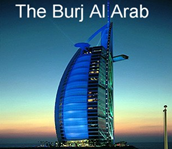
We stayed a week there, coincidentally right when the IMF and World Bank were holding their annual meetings. The city pulled out all the stops for the international delegates, including building a $218 mn dollar convention center and three new massive hotels (Hyatt, Shangri-la and one other).
They also ordered 70 bullet-proof Mercedes limousines. Dubai has no shortage of 5 star accommodation and is home to the only 7 star hotel in the world (true). The irony was not lost on us watching the delegates from the IMF, World Bank and many NGOs enjoying 5 star (and some 7 star) luxury accommodation with all the perks while earnestly discussing world poverty.
This event, held overseas every three years, is billed as the “Financial Olympics” and this was the first time it was held in the Middle East. Dubai’s strategy in hosting the 16,000 delegates that came was to show the world the city has arrived and is an international destination of note. I think they succeeded.
As two tourists with no agenda we stayed a little closer to the ground in a 2 1/2 star job for 60 bucks a night called the Landmark, right downtown in the Deira section of Dubai with a lot of Russians as neighbors. Other than the youth hostel (no way) I think it was the cheapest digs in town.
When we arrived at midnight I was hot and thirsty and felt like a beer. I remembered reading that Dubai is “the party capital of the Gulf” and that alcohol is freely available at hotels, pubs and clubs. I checked the fridge in the room – nothing. So I called downstairs and asked for them to send a cold one up. I was immediately told in no uncertain terms, “Sir, we have no beer. This is a family hotel.” (!!).
I don’t think that would happen in the Burj Al Arab, the exquisite sail shaped 7 star hotel that stands on its own island in the Gulf where the delegates were staying. What a phenomenal building, at over 1,000 feet, it is also the tallest hotel in the world. Rooms start at around $800 a night so I guess I would need to work for one of those poverty-eradicating organizations to stay there.
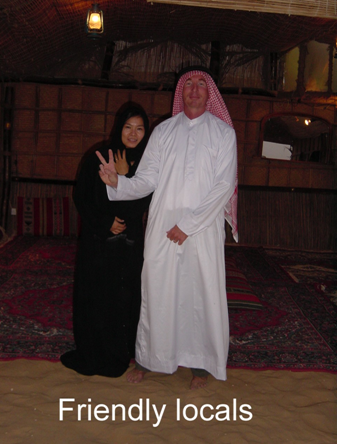
What is Dubai? It is basically a city-state and one of the seven emirates that make up the UAE, the United Arab Emirates. You may have heard of Abu Dhabi, which is the largest emirate and the capital of the UAE. Dubai is the commercial center of the group and, like I said before, “the party capital.
” The UAE is part of the Arabian peninsula but sits on the Persian Gulf (the Arabs call it the Arabian Gulf) so it has nice beachfront property. Other countries in the Gulf include Kuwait, Bahrain, Qatar and Oman. Except for Oman, all are oil-rich sultanates. In the UAE, Abu Dhabi has the oil and Dubai has the smarts. Dubai’s limited supply of black gold is running out and they are diversifying in a big way.
Replacing the oil economy with one driven by tourism and trading has been the big push the last 15 years of the Al Maktoums, the enlightened royal family which has ruled Dubai for 200 plus years. Now oil accounts for just 17% of GDP. Tourism, at 18% of GDP, has just surpassed oil in importance this year for the first time.
During this difficult transition, per capita GDP at $26,000 has doubled in the last 12 years, an annual growth rate of almost 6%. In the ’90s the non-oil sector grew at 9% per year, solid evidence the transition is working exceedingly well.
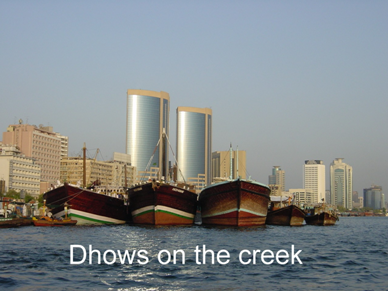
The population mix is very interesting as well, UAE “nationals,” (Arabs to us) make up only 19% of the roughly 2 million population. Most of the rest are from the subcontinent, Iran and about 8% are westerners, mostly Brits. The Emratis wanted modernization in a bad way so they bought it.
Remember, this place was nothing but a dusty fly-bone roadstead on a muddy estuary before the discovery of oil 50 years ago. The glittering city that arose from the dunes was designed and built by foreigners and boasts some of the most beautiful and awe inspiring architecture in the world.
Like most trading centers and major cities (think New York, London, Paris) it is built on both sides of a river, called “the creek,” which gives the place lots of atmosphere as handmade wooden dhows from all points in the Gulf still cruise (now under power) up and down unloading their wares.
And like all historical and current centers of trade, it is a more open society than its neighborhood would suggest. When we went outside Ariel didn’t have to wear a veil or a bed sheet.
Dubai is still a conservative place where public displays of affection and skin are frowned upon, however, we saw both. There are some real slutty women there. The “nationals” are completely covered up; the men in the traditional white gowns with headgear have cell phones glued to their faces and the women are decked out in black with their faces often covered. Nationals, like everyone else, are most easily spotted in any of the air-conditioned mega-malls that have sprouted up throughout the city That is because they love to shop and because it is STINKING HOT outside.
When we were there in late September, it averaged 105 degrees F with 95% humidity. This was the end of the hot season and we were told for the five months prior it was closer to 115-120 degrees with the same high humidity. When you step outside it is like opening an oven door while baking bread; the heat hits you like a wave and your nose hairs disappear in an audible puff of smoke.
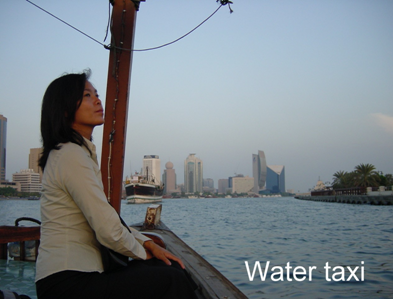
What makes Dubai different is that they don’t sit still, these people think big. Other than beginning construction of the world’s tallest building, here are some of the other things going on outside the pretty malls that you’ve never heard about:
1) Dubai has taken out full page ads in regional papers and magazines (and others I assume) proclaiming its goal to become the Middle East’s center of banking and capital markets. Considering that the ratio of stock market capitalization to GDP in the US and European countries is about 150% while in the UAE it is around 50%, they have a lot of growing to do.
Average DAILY turnover in Dubai’s tiny stockmarket is about $2-3 mn dollars, which is less than one minute of trading in a second-tier market like Taiwan. I guess this is basically one sheikh passing along a few shares to another; very sleepy. With thin, thin, almost invisible capital markets (the bond market is even a paler shadow) Dubai, like all Gulf states, is a massive capital exporter.
Many billions of dollars leave the emirate every year to buy property in the US or Europe or to support Nasdaq (thank God). Think about this; recent surveys estimate 85% of private wealth in the GCC region (Gulf Cooperative Countires), or about $1.4 trillion, is invested abroad. Providing deeper financial markets at home would lure back quite a flow.

2) Remember Maastricht? (The customs treaty signed in 1992 by EU member states and an exceedingly pretty town, by the way). GCC Customs Union was announced this year. Taking a page from Europe’s songbook, all six GCC states (Kuwait, Bahrain, Qatar, Saudi Arabia, Oman and the UAE) are also aiming for monetary union by 2010 with a currency unit which will most likely be pegged to the US dollar. An enlarged GCC market presents a GDP of over $300 bn and Dubai would be many multinational’s first choice for a regional HQ.
3) Dubai Healthcare City; by 2010 with cooperation from the world renowned Mayo Clinic and Harvard Med School and $1.8 bn, DHC aims to become “the globally acknowledged location of choice for healthcare and a centre of excellence for specialist medical services, medical education, life science research and technology leveraged healthcare services.” So if you get sick, this is the place to be.
4) The world’s first UNDERWATER hotel, the Hydropolis – a clumsy name that I hope they change, is scheduled to open its doors (carefully) by 2006. Shaped like a jellyfish and inspired by Jules Verne’s “20,000 Leagues Under the Sea,” the Hydropolis will sit 20 meters underwater in the Gulf. Price tag: $550 mn. Weird but small potatoes to what else is going on. See what’s next below.
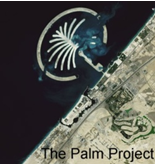
5) The Palm Project: We have seen how if you want a first class modern city you can buy it. Coastline rather flat and boring? How about buying your own archipelago too? Now under construction, The Palm Project, billed as “The Eighth Wonder of the World,” involves building two of the world’s largest man-made islands and then adding over 50 luxury hotels, 2,400 exclusive residential beachside villas, 2,500 shoreline apartments, 2 marinas, water theme parks, restaurants, shopping malls, sports facilities, health spas, cinemas and extensive dive sites.
This $3 bn project, which looks like a palm tree, is so large that next to the Great Wall of China it is the only man-made project easily visible from space with the naked eye. The dirt and stuff used to create the islands if stacked in a wall 2 meters high could circle the globe three times.
The satellite photo, by the way, is of just ONE of the islands. They are building another one just like it a few miles down the coast. Football fans note, your hero David Beckham has already bought a villa there.
6) The World Project: Not content with two palm tree-shaped brand new islands, Dubai is also embarking on “The World Project” where they will build still more islands in the Gulf but each of these 200 islands will be a miniature of an existing country.
Born too late and missed your shot at being Napoleon? Don’t worry, you can buy your scale version of France in about three years. The idea, again, is to sell these islands off one by one to high net worth individuals who desire something different/wacky in their portfolio.
7) Hey, the marina’s are all full with waiting lists. Not a good place to bring the boat yet. There were three places to keep the boat in Dubai, every one chock-a- block. But with all the activity mentioned above there will be another 2,000 berths added over the next few years. So our plan for now is to head up the Red Sea to the Med.
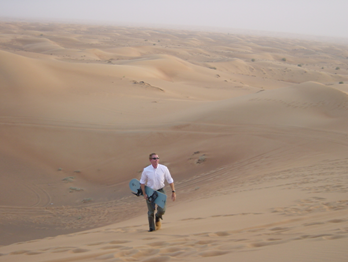
Part of our wanderings in the emirate included ‘dune bashing’ in an immaculate 4 wheel drive Toyota SUV. After shopping, off-roading through the desert dunes and dry riverbeds, or “wadis,” is the leisure activity of choice in the Gulf. It was a thrilling ride with our driver bouncing along knife- edged sand dunes at 40 miles an hour and us looking straight down 100 feet either side.

We also did the obligatory feast in the desert on carpets under the starry night sky with belly dancing for entertainment. Ariel had some traditional henna painting done on her hand by a Bedouin woman. It was beautiful and lasted about a week. Unfortunately, we didn’t get to ride a camel. Next time.
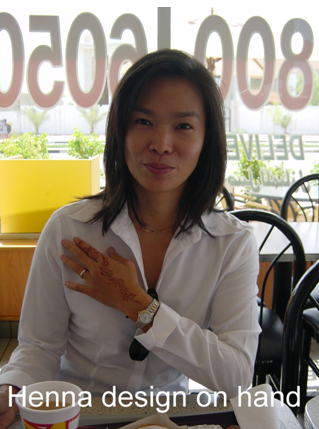
The people were very polite and the food excellent; great salads and kebabs everywhere.
Our impression; Dubai has arrived, take note. 10 years from now, the club of most important world cities will be; London, New York, Tokyo, Hong Kong and …. Dubai.

